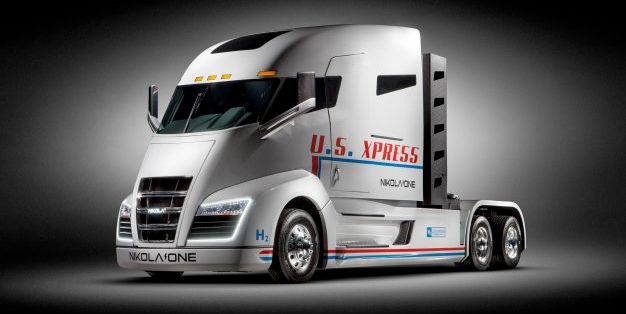Truck Stops to Need Small-Town Levels of Energy to Charge EVs

A study conducted by utility company National Grid suggests that highway truck stops setting up for EVs in the next two decades could require the same amount of power as a small town might use.Based on current traffic patterns, the study found, many highway charging sites (the equivalent to a highway gas station) will require 20 or more fast-chargers to meet EV demand.The study focused on 71 highway sites in New York and Massachusetts with an eye toward finding solutions to “future proof” U.S. highways for the EV era.
There are a lot of hurdles to clear between where our infrastructure sits now and the seemingly inevitable future of widespread electric-vehicle use. A new study from utility company National Grid is showing just how tall some of those hurdles may be.
The study examined traffic patterns and projected charger use at 71 highway sites throughout New York and Massachusetts and considered relevant EV sales goals/mandates, based on a scenario in which all light-duty vehicles sold in the U.S. are electric by 2035 and all medium- and heavy-duty vehicles sold are EVs by 2045. Think of the highway sites as being equivalent to a highway truck stop or gas station. According to the study, in the next 10 years more than a quarter of the sites studied will require 20 or more fast-chargers, or the equivalent power of a sports stadium, to meet demand during peak hours.
National Grid’s analysis of EV charging capacity changes in the Northeast.
National Grid
As things stand now, fast-charging along American highways is still in the embryonic stage. To find 20 chargers in one spot, at least outside California and outside the Tesla Supercharger network, is nowhere near the norm. Sometimes, finding an open charger is only half the battle; finding a fast-charger in working order becomes even harder. Gas stations may be able to get by with only four or six pumps, but charging most EVs takes considerably longer than pumping a tank of gas, meaning there will be more time for potential overlap at the charger.
According to the findings, in 10 years more than a quarter of sites studied will require the same amount of power as an outdoor sports stadium to meet charging demand, with some requiring the same power as a small town within the next two decades. The study suggests plugging into the existing high-voltage electrical grid to “future-proof” high traffic areas on the highway. Conveniently, the study notes, these transmission lines already tend to mirror highway routes.
Equivalent to a Small Town
Sites acting as electrified truck stops could require the same amount of energy needed to power a small town. Size and weight are especially important for electric vehicles. Take the nearly 10,000-pound GMC Hummer EV, with its 2923-pound battery, which took an hour and 49 minutes to get from 10 to 90 percent state of charge. On the other hand, the 4800-pound Taycan, which accepts a lower peak power input than the Hummer, is able to charge from 5 to 80 percent state of charge in a claimed 23 minutes. It’s not hard to think about how a parking lot full of electric semi-trucks, all towing roughly 40 tons, would require a huge power output.
“No Regrets”
Transitioning our highway infrastructure will not, and can not effectively switch overnight. Of the $5 billion the Bipartisan Infrastructure Law from last year promised, the first $900 million or so has been approved for EV chargers to cover 53,000 miles of highway throughout the country.
In its summary of the study, National Grid says a goal is to figure out how to do “no regrets” upgrades at “no-regrets” sites—”so we can build grid infrastructure once, and build it right.” In what seems like an understatement, the power company says upgrading and building high-voltage interconnections along highways “can take years,” which is the points of its study urging the industry to plan ahead for it now. One thing is for certain: the highway landscape is going to look different—and much more electrified—10 and 20 years into the future.
This content is imported from OpenWeb. You may be able to find the same content in another format, or you may be able to find more information, at their web site.



